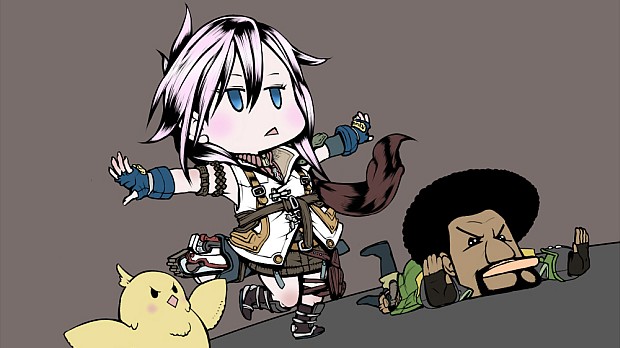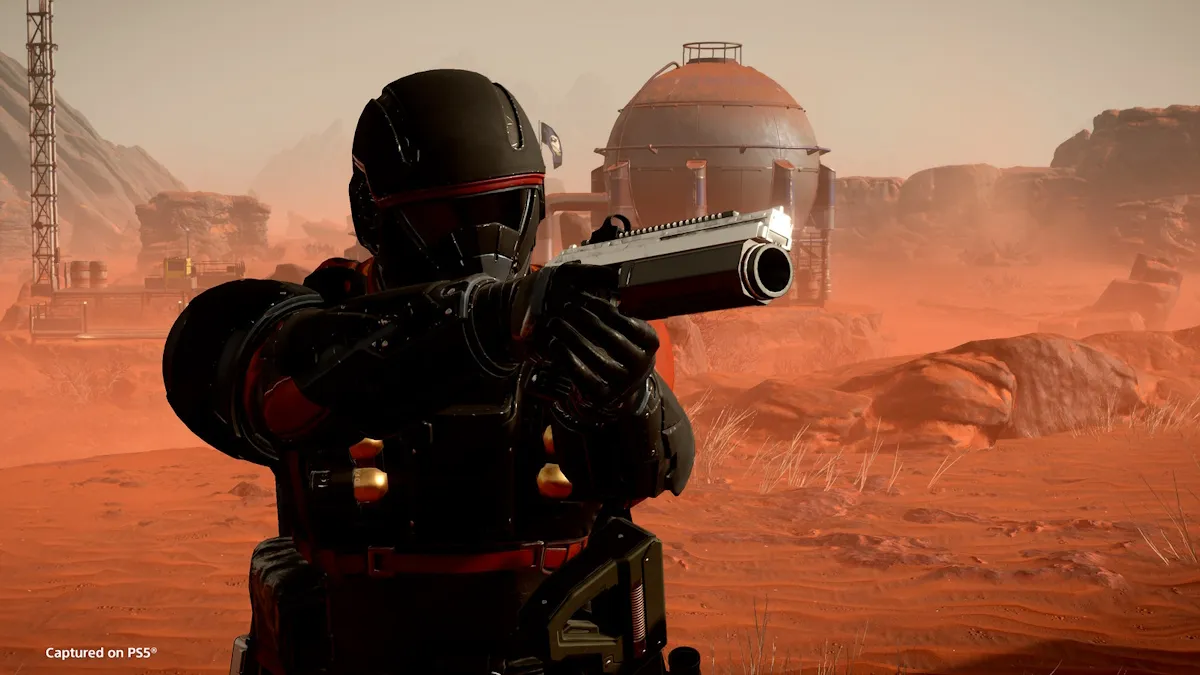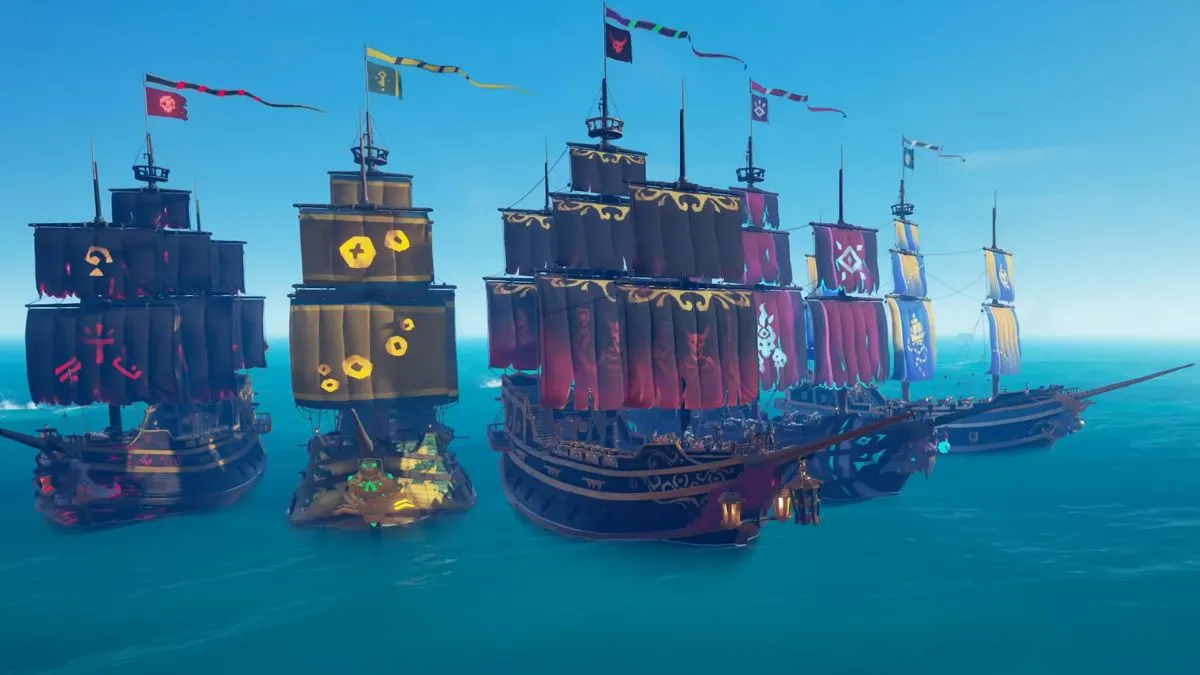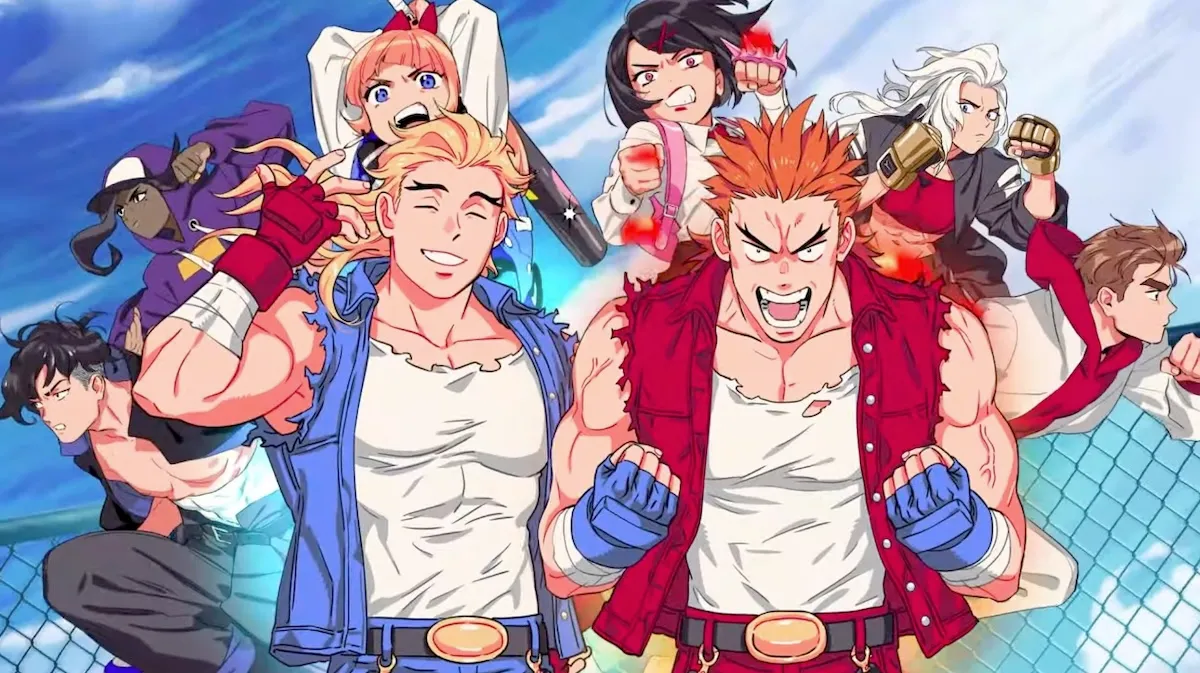If you haven’t noticed, a big Japanese role-playing game launched recently — Final Fantasy XIII. Even with the last couple of years chock-full of big RPG releases, this is one of the biggest. And it’s also one of the most divisive JRPGs, in part because, as a Final Fantasy game, it represents what JRPGs are to pretty much everyone not familiar with Dragon Quest (i.e. people not in Japan).
You’ve probably heard the arguments for and against JRPGs, here or elsewhere, but suffice it to say that one can’t help but acknowledge that they’re need of more diverse design philosophies, its audience a bit too fond of tradition and comfortable conventions.
The most distasteful of those JRPG conventions — and the biggest obstacle to its critics’ ability to enjoy them – is, without a doubt, The Grind. At its worst, grinding is entirely a matter of numbers, with tactical brilliance or skill mattering for naught in the face of the enemy having one level higher than yours, a speed bump along the road to the next cutscene.
Mind you, at the core of the matter, grinding is relative, and depends largely on the perception and individual preferences of the player. If it doesn’t feel like a grind, it isn’t. The problem, then, is that it does feel like a grind more often than not, and especially not in an environment in which the Japanese-style RPG is no longer the only type of storytelling-focused game available.
What do we do about it, then? What can developers do to minimize that feeling of tedium in their games? How can grinding be fixed?

When you cast Libra, you learn this
Much of what’s wrong with JRPG commentary is that many of the subgenre’s critics are doing so from a slightly skewed perspective, or are at least writing for audiences who share the same. That perspective is that they view JRPGs expecting them to be role-playing games, when they never really were in the first place. With some exceptions, the vast majority JRPGs are not role-playing games, and the ways that they’re different are more apparent now than ever before, when nearly any game can convey complex narrative and lay claim to “RPG-like” character-progression elements.
“RPG” is rapidly becoming the most misused and abused term in gaming, its boundaries expanded so far as to be almost irrelevant to telling people about what a game does and does not do. JRPGs today, by their perceived “stagnation,” show how the genre barriers we’ve subconsciously erected as the gaming audience has expanded are crumbling.
More games and game types than ever are capable of spinning a decent yarn, and it’s come to light that JRPGs were only called that because “RPG” was the only term we had for narrative-driven games at the time JRPG were dominant. Sure “W”-RPGs existed (and it’s from them I derive this view), but those were generally restricted to PCs, which never quite did succeed at defining what videogames were to the masses. Still, “JRPG” serves as an effective cultural shorthand for “that” type of game, so it’s usage will likely continue until we can think of something better.
What am I getting at, here? Why is it important to know how JRPGs are closer to an extension of the Point-and-Click Adventure than actual Role-Playing Games? Well, it’s important to my next section, which is titled:

Selphie likes trains
Final Fantasy VIII‘s Selphie Tilmitt likes trains. Trains are vehicles that are on rails. For the most part, rails go in one direction (backwards doesn’t count), and when the trains leave them, things tend to get messy.
Obviously, I’m talking about the typical JRPG narrative, which is strictly point A to point B. It’s as traditional as you can get. Sometimes it branches out, but it usually ends the same way regardless. Players rarely, if ever, “play a role” in shaping the story (again, with some exceptions that I’ll bring up in a bit). Just as an adventure game’s events all happen in a particular, author-defined order, a JRPG is usually linear.
That’s not a criticism. I love linear games. I resent that it’s somehow been equated to “bad” in recent years. But I’m still surprised sometimes at how seemingly unwilling JRPG developers (and even some of their players) to recognize that fact. A big map does not a nonlinear game make. And again, it’s probably due to the skewed perspective brought on by trying to define subgenre by that tricky little acronym.
So, how does recognizing that most JRPGs are linear help us design out that grinding feeling (which is the objective of this article, after all)? Well, my suggestion is to embrace that fact, and work the mechanics around the linear narrative (or even vice-versa). This does two things: it reduces the “ludonarrative dissonance” that JRPGs are so famous (and sometimes vilified) for, and helps the JRPG developer reduce the grind, or rather, the need to grind. Which brings us to the next point, which is titled:

Express line to success
Continuing the railway metaphor, the mechanical point of a train is to get to a predetermined stop, the station. Every time a train stops at a station, one journey ends, and when a train leaves a station, a new journey begins. That’s really not as poetic as it sounds, but rather illustrates one of the problems JRPGs have, specifically that of pacing. Side quests, crafting and minigames are all distractions that sabotage the JRPG’s ability to convey a coherent, linear narrative. The train won’t arrive on schedule if the passengers are allowed to screw around with the throttle.
Now, that sounds like I’m asking JRPGs to render players even more irrelevant than they already are to the game, but what I’m really pointing out is that thanks to all these distractions, developers are essentially incapable of determining where a player is in terms of character progression. As a result, the typical JRPG must set a specific, arbitrary “point” every so often – usually in the form of a boss fight or dungeon – that the player must overcome to proceed along the plot line.
Take, for example, Game Informer‘s review of Final Fantasy XIII, which (I’m paraphrasing here) mentioned that the point where the world really “opened up” was the same point the felt some grinding was necessary to proceed. The more players are allowed to screw around with the throttle (i.e. halt progress and engage in side activities), the less a developer can accurately estimate the player’s position on the difficulty curve, and the more likely it becomes that those who just want to follow the plot at the pace it purports to go get shafted by that grinding feeling, once the game opens up and derails the train.
Then again, that brings up an issue of control that conflicts with the binary nature of most JRPGs. It’s a hairy problem that I’ve dubbed:

The Demogorgon issue
The Demon Prince of Abysm is a creature of two minds: one is cold and calculating, another screeching and insane. And within his/their twin-towered fortress above the Brine Flats, legions of minions serve the individual, often conflicting interests of either head. JRPGs are similar. On the one hand they have heavily linear stories (acted out by people with great hair), which require careful control of pacing to work right. On the other, they have a fun character progression system that usually revolves around getting to level 99. Both are addictive in nearly equal measure, but the thrill of progress is the most obvious one. There is a reason that most JRPGs have a 99-level scale, even if they can often be can be finished in the high fifties and low sixties. That reason is to please the munchkins that lovingly labor and toil for the Prince’s pleasure (and their own). If developers try to throttle that progress too much for the sake of adjusting challenge and keeping the story coherent, players won’t feel as if they have control over anything in the game.
This presents developers with a two headed Demon Prince of a problem: how do you feed the grind-happy munchkin while maintaining the pacing necessary to keep munchkins and non-munchkins alike still interested in the story JRPGs are purported to concentrate on?
Forcing a game under the knife and simply cutting out the distractions I mentioned in “Express line to success” one option, but that’s rather drastic and not always desirable. Munchkins also like cooking, crafting, snowboarding, Blitzball, dodging lightning bolts and breeding the all-important golden chocobo, you know. Distilling the game down to battle and cutscenes can lead to fatigue, and in the worst case, make a game feel “stripped down” and anemic, a criticism some have leveled at Final Fantasy X, and already at Final Fantasy XIII‘s early-game experience. Which raises the problem again, that of making distractions not feel that way.
An alternative approach might be called:
Sending it down the drain
That’s not as negative as it sounds. When a sink or tub is full, pulling out the stopper covering the drain causes a little whirlpool to form, sending all that water to a single point in the center. If the center of the game – that drain point – is to convey the linear narrative, why not orient all that water weight to flow towards that point? Right now, grinding and distractions are forming the stopper, rather than helping the water through the pipes. Perhaps it’s best, then, to use these distractions and contextualize them within the story, allowing them to contribute to narrative flow rather than stand outside of it.
An example of this can be found in games of the Suikoden franchise. All the games in the series have revolved around recruiting the 108 Stars of Destiny, a boatload of characters major and minor that help the player along in his quest to deal with the politically-charged nation-building that Suikoden games are famous for. This often involves sidequesting, minigaming and fooling around with things that don’t all concern themselves with cutscenes and battling. Cooking contests, commodity trading, optional dungeons and the occasional army-level engagement (something else Suikoden titles are known for) all help these recruitment exercises along. Of course, recruiting all of them isn’t strictly necessary, but the idealized goal of “catching ’em all” is clear from the outset, contextualing much of the side activities and alternative locations, conserving munchkin appeal, as well as letting folks who just want to see the plot know that “yes, this stuff is important, too.”
And that applies to minigaming, too. Sure, you needed to win a chocobo race to leave the Gold Saucer, and needed to snowboard a bit for…something in Final Fantasy VII, and there’s always a mine cart level, but those are all one-off activities that do little more than provide a break where nothing is happening to progress characters, be it in terms of mechanics or narrative. The trick is to give players, munchkin or nay, a reason to enjoy and engage them continually, for rewards beyond money and experience, ones that broaden and further substantiate the overall experience regardless of ultimate linearity.
Of course, one could even skew further in that broadening direction, bringing about somewhat more fundamental changes that, given a more traditional JRPG could be called:

A secondary priority
Placing what would otherwise be considered “secondary” experiences in any other game up front and center morphs a JRPG experience into something that feels less linear, less like riding on a rollercoaster and more like driving bumper cars, bouncing around in a single, arguably limited space.
Most often the result of that type of attitude is the dungeon-crawler a very traditional subtype of the JRPG, one that sacrifices coherent, A-to-B narrative on the altar of mechanical, progress-oriented bliss. In that environment, a grind is not a grind but the game itself. Shiren the Wanderer, Etrian Odyssey, Shin Megami Tensei: Strange Journey, and legions of Mysterious Dungeon titles sit happily in that space, gleefully immersing their players into system-manipulating bliss. The act of mapping a dungeon, spending a billion hours fusing demons, or wandering around seeking mortal danger are the stuff of munchkin dreams.
Unfortunately, munchkin wet-dreams don’t really have the widest appeal to those raised thinking RPGs are all about the story. Thankfully, some recent series have proven (or reminded us) that such attitudes are NOT incapable of setting up a proper narrative. Games of the unending Atelier series (and various other alchemy-ish JRPGs) centered both their narrative and character progression systems around the acts of crafting and item-gathering, and latter-day Persona titles center their characters’ lives around a limited, familiar set of locations filled with side activities, free to be scheduled and arranged by the player’s will. By that extension, even Rune Factory has become “that type” of JRPG.
And for the longest time, strategy and tactical JRPGs have had this down pat. Players of such have in the past spend more time manipulating mechanics and crunching the numbers than engaging in any kind of compelling narrative. What’s really “new” in this case is that, such as with the flowchart plotlines of Devil Survivor and atmospheric doom-and-gloom of Demon’s Souls, developers have managed to contort old systems into positions that tell fresh stories.
It doesn’t always work for every JRPG. World-spanning epic journeys don’t fit well with premises that center on small-town life, which leaves perhaps the simplest, easiest, most universally applicable solution around, to wit:

Bonus culture
Progression is addictive, yes, but for too long that progression has been represented by a slowly increasing number and the promise of survival. It’s time to concentrate on rewarding the player, and to tap that Skinner-box behavioral training that art-game fans pretend to be afraid of. Something as simple as Final Fantasy XIII‘s battle rating turns grinding into competition, an act of trying to exploit as many possible bonuses from whatever the game throws at the player. Juggling damage multipliers and trying to end every fight on a super attack in Super Robot Taisen OG Saga: Endless Frontier not only improved my ability to play the game itself, but became a goal I could strike for beyond merely surviving until the next save point.
JRPGs can and should capitalize on their reputation for flashy graphics and stylish art direction to give rewards both visual and visceral for players who “do it right”. Final Fantasy XII’s License Grid did that, for one. Every little block I bought with my hard-earned LP brought me an ever-diversifying range of fancy equipment and potential tactics. Even cosmetic things, such as Ar Tonelico 3 characters’ costumes getting increasingly fantastic as their spell power grew in battle, all add to the feeling of reward.
And when players blunder into something they shouldn’t have survived, but somehow did, the rewards should be appropriately scaled to the feat performed. What matters is that I took down the big dinosaur or defeated Adrammelech early in Final Fantasy XII, not that I spammed the hell out of Quickening attacks to do it. That kind of munchkin-feeding is part of what made Last Rebellion tolerable as I played it. Accidentally coming upon a tough encounter made me so strong afterward that everything down to my narrative-appropriate level became a cakewalk. While that was ultimately a problem of Last Rebellion‘s poor map design and incapable pacing, it felt like a reward for my doing so well that one time.

Ultimately, solving The Grind must involve enhancing – and maintaining – the illusion of reciprocity, that players are getting back results for what they do (or are allowed to do). It could be enabled mechanically, such as by hinging progress on how effectively the player has manipulated the system, or narratively, by pacing it in such a way that the player feels like everything he does needed to be done. As I mentioned before all this rambling, it’s not a grind if it doesn’t feel like one, and showing off actual results guarantees that it won’t.




